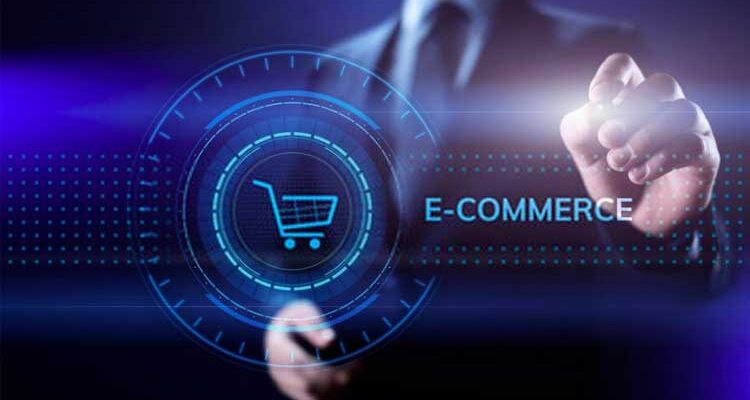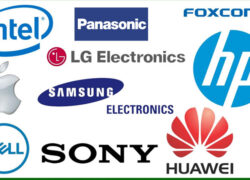The business of e-commerce – buying and selling goods and services through the use of the internet – was given rise over 40 years ago in 1979 by the entrepreneur Michael Aldrich, when he gave life to teleshopping. However, history suggests it even started before that when Ed Guilbert designed a standardized process that later led to the introduction of Electronic Data Interchange (EDI).
The business of e-commerce has spread at a rapid speed in recent years with many businesses acquiring the customer data needed to further enhance their growth.
There are three types of E-commerce businesses.
- Business-to-Business (B2B): It is where one business sells its products to another online business. An example of this type of business is Shopify, a user-friendly e-commerce business allowing small businesses to build an online store.
- Business-to-Consumer (B2C): Another type of E-commerce where a business sells its products to consumers online. Amazon is an example of this, where businesses target specific customers online.
- Consumer-to-Consumer: This is the type of business where a consumer has done impulsive buying, only for the purchase to end up somewhere in the house. Instead of the purchase going to waste, the consumer decides to use the services of eBay, where he/she uploads images of the products for other consumers to buy.
E-commerce or in other words online buying and selling of goods has a lot to offer. Many customers disregard buying products if they know they need to go outside of their homes to buy and instead prefer online buying from the comfort of their homes.
Let’s peek through the advantages of e-commerce businesses.
One of the benefits that are meant for the business is cost reduction. Sellers don’t have to worry about the high maintenance cost of the physical store or the salaries of their employees.
Moreover, sellers don’t have to spend heavily on the marketing side to promote their items as e-commerce has a lot of affordable ways of marketing. Since the e-commerce market is all about images, the seller can add high-resolution images, and add final touches to the design to make it more attractive.
Another plus for the business is that product and price comparison become easy through e-commerce since it is fast-paced and there is the luxury of covering more products. In addition, there is no limit to how many customers can be reached through online marketing which is also not too expensive.
Several payment modes are beneficial for both, the seller and the buyer. The customer will know the ways he can pay, which is not limited to one mode.
Some of the businesses are still doing everything manually, from storing business information until the sale is recorded including the customer information. Not only it is helpful for your own business but helps the customer in making more informed decisions with all the information given.
The incorporation of technology into the e-commerce business is essential in today’s world just to stay shoulder to shoulder with other businesses.
The uproar technology has created in the world with new inventions is immense. It has made life easier for businesses. There are many ways in which Technology has paved the way for an e-commerce business to grow.
The introduction of the ERP system has changed the way E-commerce businesses go about their work. It has made life easier and allowed businesses to plan. ERP stands for Electronic Resource Planning, a software that organizations use to manage day-to-day business activities such as Finance, Human Resources, Manufacturing & Logistics, Supply Chain Management, and Customer Relationship Management (CRM).
Let’s go through each component of the ERP software one by one.
- Finance Software
As the name says, it helps the businesses to keep track of all the financial data which includes but is not limited to accounts receivable and payable, costs, budgets, and any profits the businesses make. What it does for the business is that it takes away the stress of having to do it on your own and it saves time for them to focus on other significant matters.
- Human Resource Software
A software which is designed to help businesses, covering everything about employees. In the case of e-commerce, human resource is quite helpful for businesses, where work is 100% remote. In this instance, the Human Resource component allows the business to take care of the payments to employees, working hours in normal office timings, and also online work where pay is sometimes hourly based. Similarly, it also helps in having attendance up-to-date through a biometric system.
- Manufacturing & Logistics Software
This part of the ERP is designed to help manufacturing businesses where they can track down the inventory and plan for production. Knowing the level of inventory beforehand helps the business in planning for the restocking of the products before they go out of stock. This enables businesses to fulfill customer demands efficiently.
- Supply Chain Management (SCM) Software
This is one of the important components of the ERP and for e-commerce occupations dealing in manufacturing businesses since it takes into account everything from the raw materials to the finished products until it reaches the customer. All the departments in SCM work independently but they need to get the whereabouts of the process through the sub-software of the ERP system as they are interlinked. Since they rely on each other, a mistake by any single department in the process will delay it for the rest and ultimately customers will suffer from late delivery.
- Customer Relationship Management (CRM) Software
Last component of the ERP system and a very important one as it collects the customer’s information using data analysis. As the name says Customer Relationship Management, is about building a relationship with the customers through working on different segments. They gather customer data from different channels and store them in their database, getting to know their likes and dislikes and then working on the information to provide better services to their customers.
Another technology helpful in the business of e-commerce is chatbots. Chatbots are robots, the alternative to humans. They help humans in their absence, doing their work via online chat to help maximize the customer experience. They help in customer retention by answering simple sales-related questions when the sales team is not available. Chatbots are very useful in a way that they can analyze the interaction with users and predict future behavior and solutions by figuring out the relevance of each customer. Using the services of Chatbots ensures 24/7 customer service through fully automated communication with the integration of artificial intelligence.
One thing we might have noticed is of getting recommendations while we are on the website looking to make a purchase. A recommendation system is a very useful tool in the e-commerce industry, assisting in converting a potential customer into a customer and also ending up retaining him. This is all done by using a data analysis tool, composing the user’s product production-related history, and showing him suggestions based on that data, facilitating him/her in the purchase journey. Another such helping tool for the e-commerce business is Smart Search. It is one of the main technologies in online business as it emphasizes the search in the virtual store. A major chunk of online sales, 60% comes from the search button as it fast tracks the process of what exactly is the customer looking for. It will irritate the customer if he cannot get the product through the search field despite the product being available in the virtual store.
Moreover, reasonable prices matter a lot but what is more significant is the ease of paying that makes sure the customer indeed makes the purchase. Offering several options to customers for making payments is essential for online stores to remain competitive. In the world, more and more people are carrying less cash and having more in the banks and using the card to make payments, not having an option of making the payment through the card discourages the users to go for the purchase, and instead, they may opt for your rival. Therefore, the integrated payment system is a must-have for every e-commerce business.
There is so much more in technology that helps e-commerce businesses. Let’s move further and check out what retention pop-ups have in store for us. While the customer is on the website looking to make a purchase, a pop-up here and there about a discount valid for 15 minutes will allow the customer to think before exiting the site and instead, he will start exploring and may eventually make a purchase just because of that one pop-up. As the name says retention pop-ups, help in retaining the customer. Also, another thing in retention pop-ups that is quite helpful and assists the e-commerce business is making sure the customer doesn’t lose their cart if he/she accidentally presses the back button. Having to add products to the cart, again and again, is quite a hassle and there might come a time when the customer may have had it all and just closes the site in anger. This part of e-commerce is important as providing the customer with a user-friendly experience with the website or the application will go a long way in retaining the customer.
The technology tools which boost the e-commerce business just don’t seem to end. Pricing tool is another technology and a very important one for the success of e-commerce. To not let your competitor edge ahead, quickly adjusting your prices to bring them in line with your rivals or even below them can be a game-changer. Pricing Tools allow the prices to be compared in a really quick time and make adjustments in very less time to wrestle back the advantage from competitors.
Crises or no crises, any business should be on the lookout for how to keep your work active and up-to-date. Hence, the monitoring of social networks is key. E-commerce businesses should always be looking at their social media for any fast action through quick thinking, which could prove to be pivotal in enhancing the brand image. Also, increasing your customer interaction is important as customers are the lifeblood of every business. Quick decision-making and making your customers feel valued will help retain the customers.
Augmented reality is another technology that is on the rise for e-commerce businesses. What else the customer needs than giving them the physical experience without actually leaving the online store? For instance, a customer on the online store can better assess the product through augmented reality and can see how a certain cloth would look on him/her. It allows the customer to examine the product as if he/she is physically checking it out.
In the online world, there is so much data to process every day which is not doable by a human or an outdated computer, hence the introduction of Big Data. The benefit of big data is that it works better when the data is huge, the greater the volume, the more efficient it works in connecting all the information.
The number of technologies available for an e-commerce business is large enough for the online business to work efficiently and enhance the customer experience through which the customer can become loyal and help the business to achieve greater heights.




